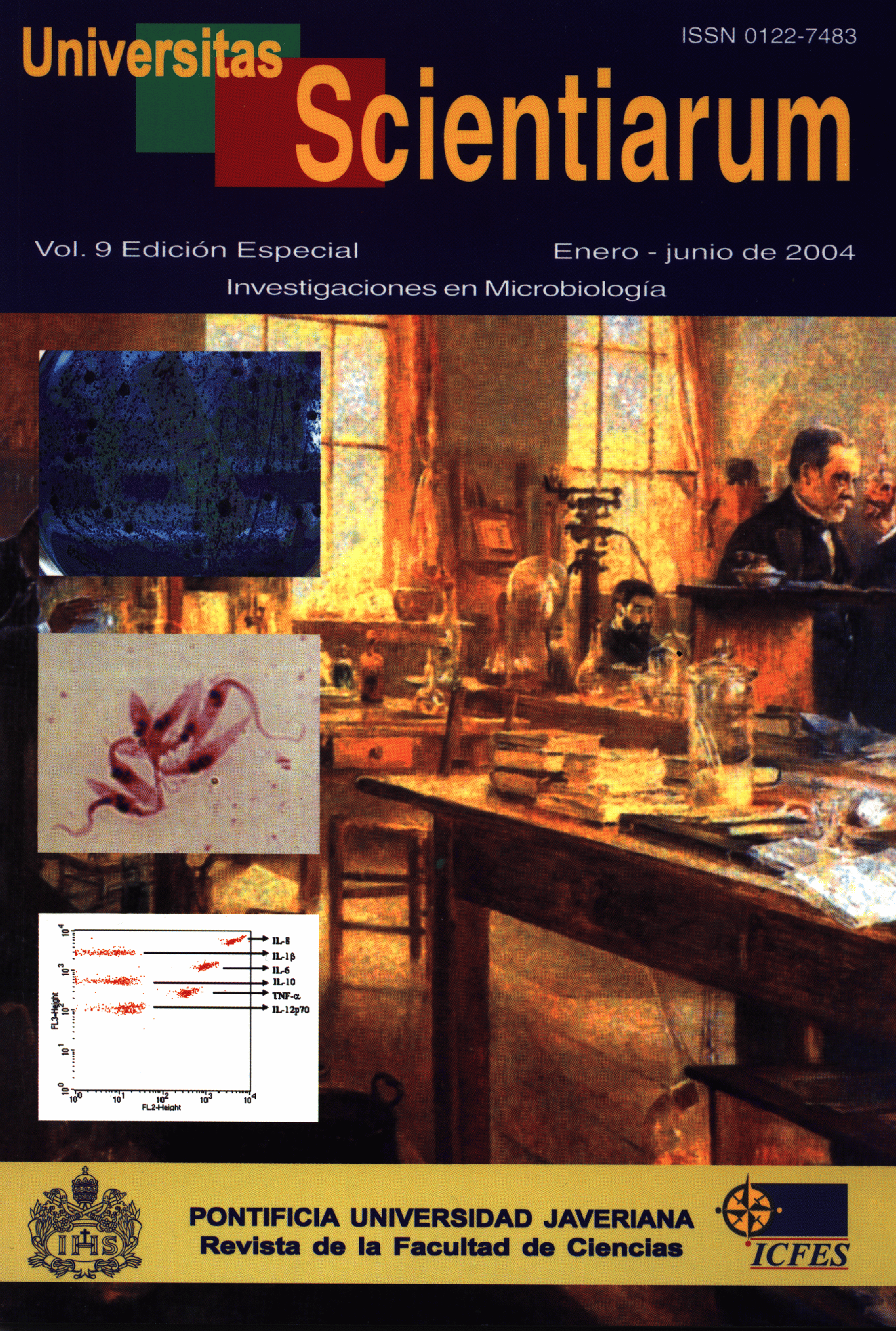Abstract
Dendritic cell activity is an important step to elicit cellular immunity. These cells are the most potent antigen presenting cells and the main activating factor for naive T cells. There are several phenotypes of dendritic cells originated from different cell precursors. The aim of this study was to assess a model to obtain human myeloid dendritic cells from peripheral blood CD14+ monocytes. Cells were cultured in the presence of granulocyte-monocyte colonies stimulating factor (GM-CSF) and IL-4 to obtain immature dendritic cells, wich were further cultured with PGE2 plus TNFa to induce their maturation. We obtained immature dendritic cells at day 5 and mature dendritic cells at day 7, according to microscopic cellularphenotype and positivity of membrane markers for CD14, CD86, HLA-DR and CD83,
Univ. Sci. is registered under a Creative Commons Attribution 4.0 International Public License. Thus, this work may be reproduced, distributed, and publicly shared in digital format, as long as the names of the authors and Pontificia Universidad Javeriana are acknowledged. Others are allowed to quote, adapt, transform, auto-archive, republish, and create based on this material, for any purpose (even commercial ones), provided the authorship is duly acknowledged, a link to the original work is provided, and it is specified if changes have been made. Pontificia Universidad Javeriana does not hold the rights of published works and the authors are solely responsible for the contents of their works; they keep the moral, intellectual, privacy, and publicity rights. Approving the intervention of the work (review, copy-editing, translation, layout) and the following outreach, are granted through an use license and not through an assignment of rights. This means the journal and Pontificia Universidad Javeriana cannot be held responsible for any ethical malpractice by the authors. As a consequence of the protection granted by the use license, the journal is not required to publish recantations or modify information already published, unless the errata stems from the editorial management process. Publishing contents in this journal does not generate royalties for contributors.



